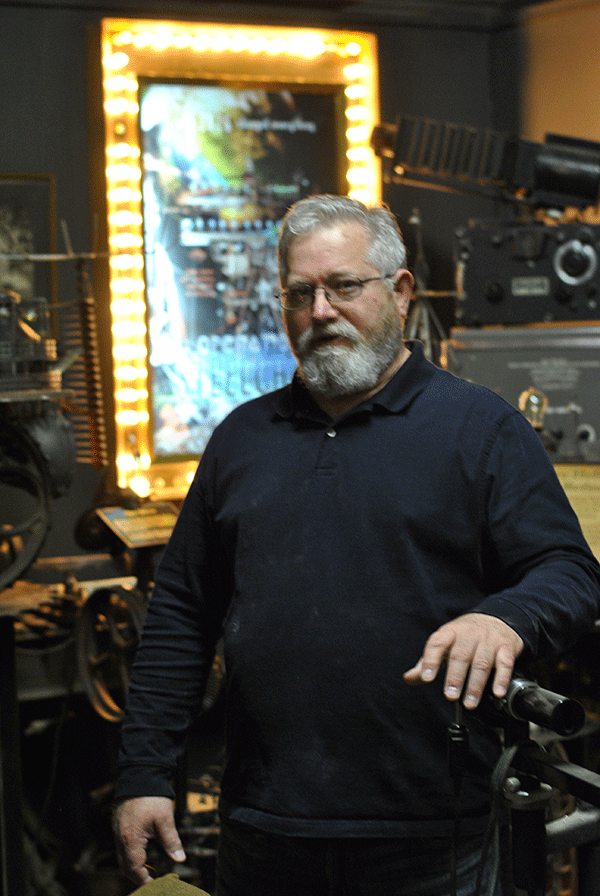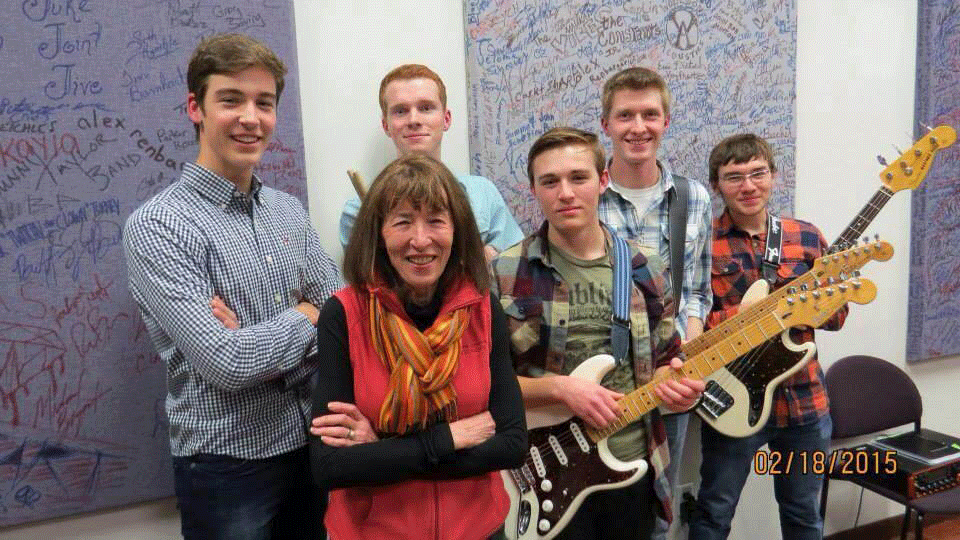Mark Phenicie is a collector of all things old. He’s a man who can look at an object, add a flash of creative thought and turn that object into something new, unusual and sometimes interstellar. Step into his lair, and the spaghetti circuits that swarm in his brain become evident. His mind isn’t a knotted string of chaos, but rather a conglomeration of life experience mixed with a vast collection of interesting objects, each observed and noted to memory with magnified attention to detail. A mastermind who looks at the world in his own way and through his perspective, Phenicie creates art that few artists would have the energy or innovative spark to achieve.
Just as Batman lives a second life as a billionaire philanthropist, Phenicie, the creator of a thriving universe, also works as a furniture restoration expert at his Huntertown workshop. Entering his office, one immediatedly senses that something a bit more unusual than reupholstering is going on behind the inner walls of his workshop. The first hint is his handcrafted lamp made from welded metal. Large insects crawl over and under the substantial lampshade that sits beside the massive metal throne he uses as a desk chair. There’s also a five-foot diameter saw blade on the floor which, of course, serves as a rug. These are not the things that blow his cover, however; those things are yet to come.
Entering the restoration room, one sees that Phenicie works hard. Dozens of stripped chair legs and chair arms hang by S-hooks from a metal pipe. A row of well-used handsaws lines the wall above a serious collection of clamps, wrenches and an impressive assembly of empty, glass coke bottles – all typical things found in a woodshop. When one steps deeper into the maze of trunks, abandoned pianos, tables, countless chairs lined up in rows on shelves overhead, all waiting to be brought back to life, it feels safe to assume this guy is a collector.
“I’m a very visual person, which makes it very hard to say no to some things,” says Phenicie. “I have 12 of those chairs; six are in my dining room. These bed frames all came from the General Lee Paddle Boat that sank in the early 1900s.”
Phenicie gestures with sweeping arms and goes on, “All these things came from that boat.”
He talks as he walks. He describes plans to refinish, reconstruct and repurpose the old furniture and then leads me into the room beyond the furniture. This is the Bat Cave, the room that blows his cover. This is the room where Phenicie’s rapid-fire brain is exposed.
Working in the Steampunk aesthetic, Phenicie combines futuristic, dystopian ideas with old world objects. His punkish, menacing pieces are an amalgamation of both what has passed and what is yet to come. Before my toes cross the threshold, Phenicie is sharing the elaborate story that adds an imaginative layer of narrative to his welded, metal sculptures.
“In the year 2012 we were told by the Aztecs that the end of the world was going to happen. These pieces represent what could have become of the human race,” he says, pointing to a piece he calls “The Probe,” a sculpture constructed of a repurposed oxygen tank and hundreds of other metal objects.
“I found this tank at a friend’s house and had to have it,” he explains.
The next piece, “Saturn,” is “kind of the tow truck of the fleet,” he says. “If one ship breaks down, this one will tow them into space to make repairs.”
Initially, “Saturn” appears just as Phenicie describes. It’s plausible that this thing could serve as an intergalactic tow truck. Look closer and an observant viewer will notice a potato masher, rake head and a drill bit all working together to “protect the antennas from birds.” A wild idea, yes, but the craftsmanship required to pull a piece like this together boggles the mind.
He takes a breath to pause, then picks up the story again.
“The humans are near the planet Kludon which is so named because they don’t have a clue what they’ve done to us. They have captured our people and held some of us prisoner …”
In addition to crafting a detailed and elaborate story to describe his pieces, Phenicie also has the capability to remember exactly where each metal object came from and the purpose it once served.
“These missiles are made from piano tuning pins. There is a bicycle chain, a radio, and this piece came off a ceiling light in a kitchen. This piece came from an old stove…” He goes on, sharing a limitless stream of information.
Phenicie’s work is not only a reflection of his collections, but also his experiences traveling the world. As a Marine, he spent time in Syria, Nigeria and Vietnam, among other locales. As he moved through the world, he paid close attention to customs and cultures. He did his best to blend in by wearing similar clothing and even making sure to bend down to shrink his large frame when talking to men of other nationalities who might be intimidated by his size. Always the observer, always the collector, he picked up and remembered tiny jewels of the cultures he experienced and sent home objects that reminded him of his travels.
Phenicie speaks admirably of the craftsman who used small, primitive tools to carve the ebony piece that sits on a shelf among other collected objects. He analyzes how long it must have taken the artisan to create the piece and points out that, according to the price he purchased the piece, the artist must have made only fifty-cents a day.
“Do you want to hear the music?” he asks. Heck yeah, I do! The lights go down, and the glowing bulbs attached to each piece flicker and glow. With the push of a button the soundtrack he has chosen to highlight his works begins to play, and he plays it loud. It is heavy, menacing music full of power and mystery, a reflection of his work. Trying to continue our conversation over the music, Phenicie turns the volume down and says, “You have to touch base with all the elements of texture, the storyline and all these parts. It’s hard to put these elements together in any other place but here.”
After seven years of building his body of work, Phenicie is looking for a venue to hold his creations on permanent display. He dreams of a restaurant placing his work in its lobby, music and all, so people can experience his work daily, not just by invitation to his workshop. He wants to share his story and his work with the world.
The elements needed to create these works are those that can only be put together by this man. His unique bent on life, his world travels and his keen eye for both collecting and repurposing are things that can’t be cloned.
 Submit Your Event
Submit Your Event


